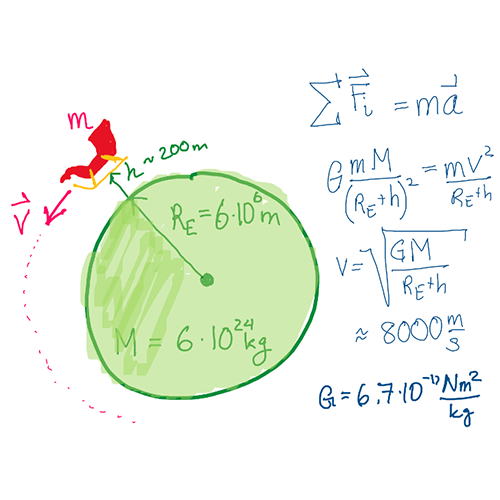Ask a Physicist: How Does Santa's Sleigh Fly?
Department of Physics and Astronomy
Santa's sleigh may work similar to satellites in orbit; the sleigh could be considered in a low orbit. It will stay aloft regardless of mass, if it has the right speed of 8,000 m/s. Due to that low orbit, air resistance will generate some heat and cause a little bit of slow-down – this is where the reindeer come in. Rudolph and company give Santa's sleigh an extra boost to keep it flying.
Let's get to the calculations to figure out how this works:

We must also consider some potential Christmas Eve complications through a materials physics lens.
First, maneuvering the combined weight of the sleigh would require a massive amount of force. At a typical speed of 8,000 m/s, the travel time between deliveries is 1 millisecond. With a mass of about 100 kg, the scale of force Santa needs to turn the sleigh between deliveries is a weight of about 200,000 tons.
Santa himself must be even more big boned than he leads us to believe.
His skeletal frame may be made of some sort of adamantium/unobtanium/beskar steel material and consequently, his internal organs must have some special supports to keep from getting squished.
And as for adding gifts to the sleigh?
Let's suppose Santa only carries gifts for 106 at a time with dumps strategically placed so he doesn't have to make return trips to the factory, and let's suppose 10 kg of gifts are allocated per individual.
The thrust required to maneuver a sleigh loaded with gifts would be a factor of 105 higher, or 20,000,000,000 tons.
Santa works hard, but physics works harder.
Or maybe we're just not factoring in enough Christmas magic.





